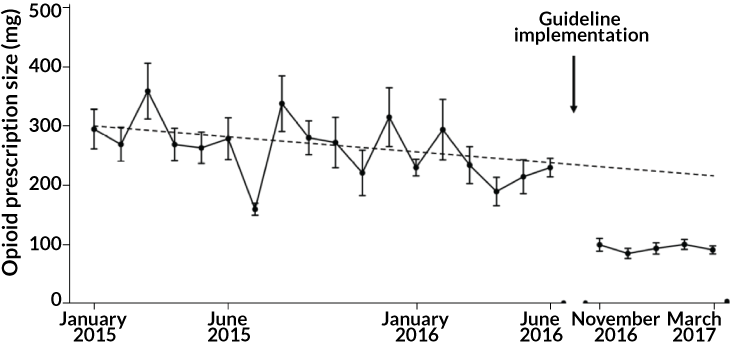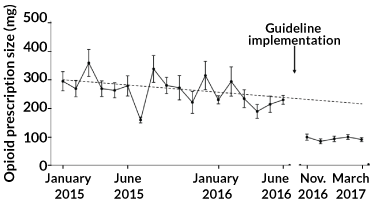What hospitals can do to help keep excess opioids out of communities
Guidelines to limit size of drug prescriptions don’t leave patients with more pain, study finds

PILL PURGE New opioid prescribing guidelines tested over a five-month period in Michigan kept thousands of opioid pills like these from being unnecessarily doled out, researchers say.
smartstock/iStockphoto
- More than 2 years ago
To halt the misuse of opioids, it may help to slash the number of pills prescribed, a new study suggests.
Five months after the implementation of new opioid prescription guidelines at a University of Michigan hospital, roughly 7,000 fewer pills went home with patients — a drop that might reduce the risk of accessible pills leading to substance abuse. But the opioid reduction didn’t leave patients who had undergone a routine surgery with more pain, the team reports online December 6 in JAMA Surgery.
“The decline in opioid volume after the intervention was dramatic,” says physician Mark Bicket of Johns Hopkins University School of Medicine, who was not involved in the study.
Around 50 percent of people who misuse opioids get the drugs from a friend or relative for free, while 22 percent obtain them from a doctor, according to the U.S. Department of Health and Human Services. Michael Englesbe, a surgeon at the University of Michigan in Ann Arbor, says that part of doing a better job of managing patients’ pain “will be preventing chronic opioid use after surgical care and making sure fewer pills get into the community.”
Englesbe and colleagues looked at 170 people who had a minimally invasive surgery to remove their gallbladders at the University of Michigan hospital from 2015 to 2016. All had received a prescription for opioids. Of those patients, 100 completed a survey detailing how much of the prescription they took, whether they also used a common painkiller such as ibuprofen or acetaminophen, and how they rated their pain during the first week after surgery.
The 170 individuals typically received a prescription equivalent to 40 to 60 tablets, each containing 5 milligrams of hydrocodone. Seven of the 170 patients requested an opioid prescription refill. The 100 patients who completed the survey used very little of their prescriptions, usually somewhere from one to 12 pills. And their average pain score on a scale of zero (no pain) to 10 (the worst pain imaginable) was five.
Story continues below graph
Dose drop
New prescription guidelines for opioids reduced prescription size but did not increase refill requests. “We really changed the way we write for opioid pain meds after surgery,” says University of Michigan surgeon Michael Englesbe.


Based on this information, guidelines for opioid prescriptions following the same type of surgery were implemented at the hospital in November of 2016. The researchers recommended prescriptions of 15 opioid pills, plus the use of common painkillers.
In the five months after the guidelines went into effect, 200 patients had the gallbladder surgery. Five of those patients asked for an opioid prescription refill. Eighty-six of the patients filled out the survey and reported that they used even less of their prescriptions — from zero to nine pills — than the pre-guidelines survey group. These patients also noted the same average pain score as the previously surveyed group and similar common painkiller use.
The study demonstrates “a relatively simple intervention at the institutional level with promising results,” Bicket says. “Patients receive opioid prescriptions within a health care system, so it makes sense to focus on getting our systems to work better in reducing the unnecessary supply of opioids after surgery.”
Along with this gallbladder procedure, Englesbe and colleagues have developed opioid prescribing recommendations for other routine surgeries, such as appendix removal and hernia repair, for the state of Michigan.







